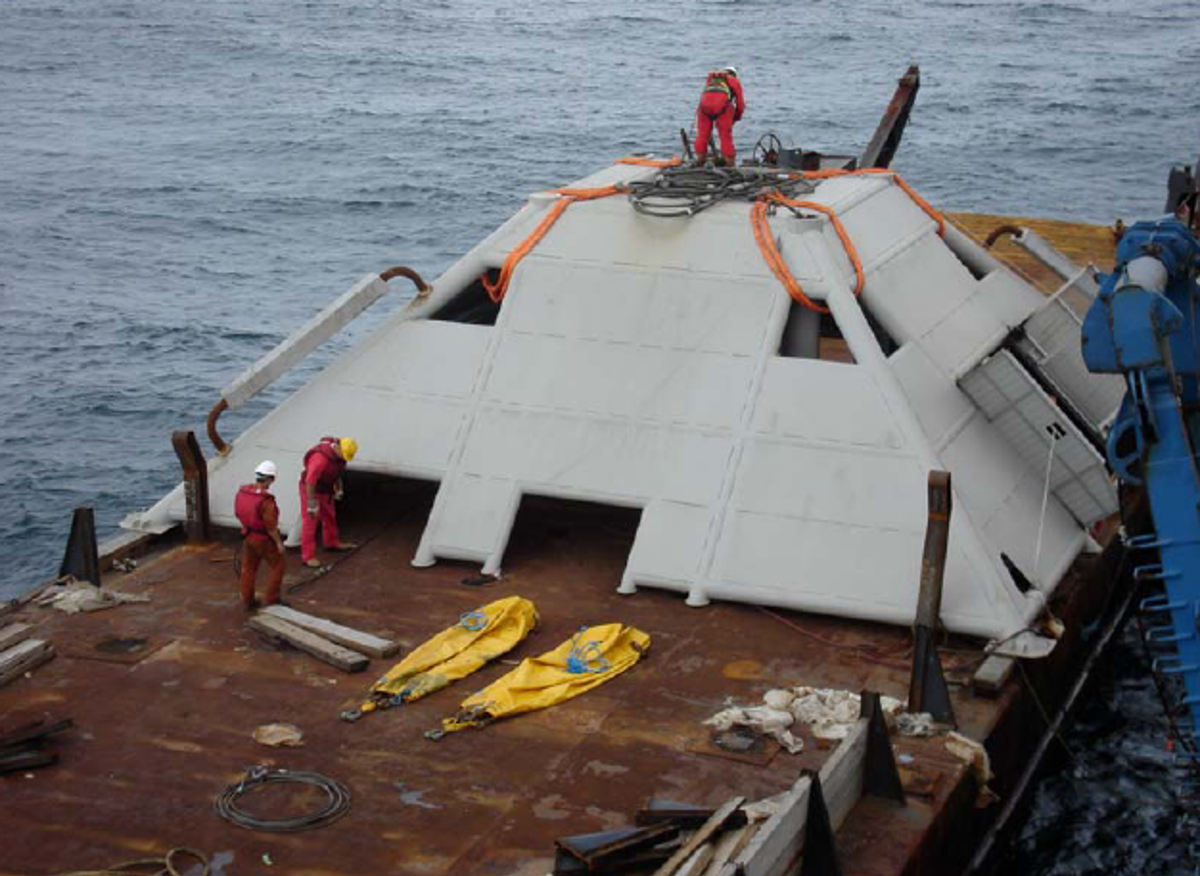Parting of slings causing fall of heavy object onto seabed
- Safety Flash
- Published on 18 September 2006
- Generated on 5 December 2025
- IMCA SF 11/06
- 2 minute read
Jump to:
A diving support vessel was installing a 24 tonne metallic cover onto a subsea valve.
What happened?
When this large object was deployed over the side of the vessel into the water, the four 15 tonne round slings used in the rigging arrangement parted and the object fell into the seabed. There were no injuries or damage to equipment or seabed infrastructure as, in accordance with the company’s procedures, the lift was made over a seabed area free of any field infrastructure.

Our Member’s investigation revealed the following:
Investigation revealed that the four round slings obtained from a local supplier had been modified incorrectly and without due authorisation from the original manufacturer.
- Close examination of the slings revealed that the fibre had been cut and re-spliced using numerous knots, hidden under the protective fabric (this could not have be spotted without dismantling the sling)
- Whereas 6 metre (working length) slings had been procured from the local supplier, the manufacturer advised that the serial number on the round slings actually corresponded to 12 metre (working length) round slings. The manufacturer also advised that it did not fabricate 6 m (working length) round slings of 15 tonne SWL
- There was no manufacturer certificate for the slings available from the supplier
- The blue label showing SWL was stitched to the sling, when it normally should slide around it.
The company noted the following actions:
- Rigging equipment shall in future only be procured from approved and recognised suppliers
- Rigging materials are to be always subject to testing and inspection as required by the applicable international standards and company rules
- Exceptions to the above should be subject to a rigorous and thoroughly documented management of change process covering all aspects of the rigging operation.
IMCA Safety Flashes summarise key safety matters and incidents, allowing lessons to be more easily learnt for the benefit of the entire offshore industry.
The effectiveness of the IMCA Safety Flash system depends on the industry sharing information and so avoiding repeat incidents. Incidents are classified according to IOGP's Life Saving Rules.
All information is anonymised or sanitised, as appropriate, and warnings for graphic content included where possible.
IMCA makes every effort to ensure both the accuracy and reliability of the information shared, but is not be liable for any guidance and/or recommendation and/or statement herein contained.
The information contained in this document does not fulfil or replace any individual's or Member's legal, regulatory or other duties or obligations in respect of their operations. Individuals and Members remain solely responsible for the safe, lawful and proper conduct of their operations.
Share your safety incidents with IMCA online. Sign-up to receive Safety Flashes straight to your email.



